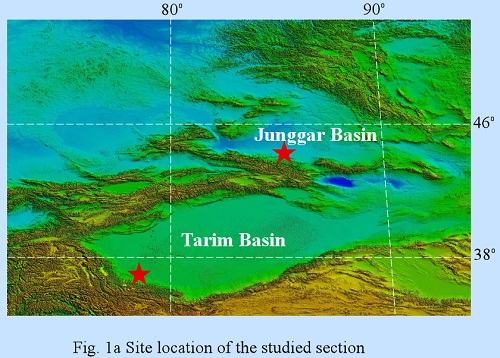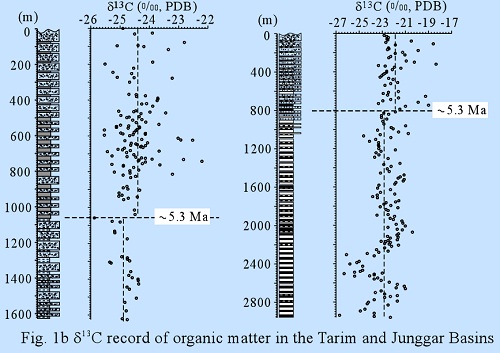Effect of aridification on carbon isotopic variation and ecologic evolution at 5.3 Ma in the Asian interiorUpdate time:10 24, 2013
Professor SUN Jimin and his team use carbon isotope compositions of organic matter to reconstruct the history of ecologic evolution during the late Cenozoic in the Tarim and Junggar Basins. The Cenozoic era is marked by dramatic climatic and ecological changes. The timing of the emergence and the subsequent expansions of C4 grasses are prominent biological events on Earth. In China, thick Cenozoic deposits in the Tarim and Junggar Basins, which are located in the Asian interior, provide important geological archives for studying paleoenvironmental changes. The results show that there is a shift to slightly higher δ13C values at 5.3 Ma indicating a change in terrestrial ecosystems in the Asian interior driven by an increased regional aridity rather than decreasing atmospheric pCO2 levels. The weakened water vapor transportation related to the retreat of Paratethys Ocean and the enhanced rain shadow effect of mountain uplift during the latest Miocene mostly triggered this event.
(Image by SUN) Sun et al. Effect of aridification on carbon isotopic variation and ecologic evolution at 5.3 Ma in the Asian interior.Earth and Planetary Science Letters, 2013, 380: 1–11(Download Here)
|
Contact
Related Articles
Reference
|
-
SIMSSecondary Ion Mass Spectrometer Laboratory
-
MC-ICPMSMultiple-collector ICPMS Laboratory
-
EM & TEMElectron Microprobe and Transmission Electron Microscope Laboratory
-
SISolid Isotope Laboratory
-
StIStable Isotope Laboratory
-
RMPARock-Mineral Preparation and Analysis
-
AAH40Ar/39Ar & (U-Th)/He Laboratory
-
EMLElectron Microscopy Laboratory
-
USCLUranium Series Chronology Laboratory
-
SASeismic Array Laboratory
-
SEELaboratory of Space Environment Exploration Laboratory
-
PGPaleomagnetism and Geochronology Laboratory
-
BioMNSFrance-China Bio-mineralization and Nano-structure Laboratory

 Print
Print Close
Close

